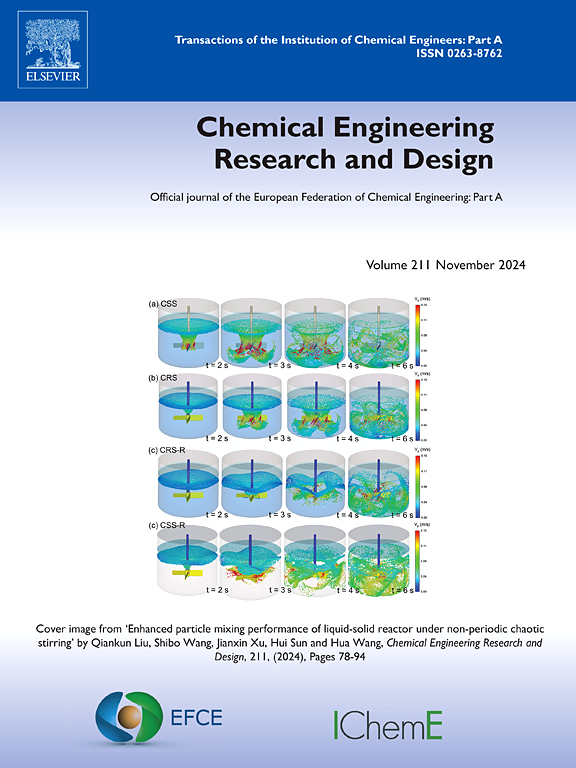A lattice Boltzmann framework for simulating reactive fluid flow with variable viscosity in porous media
IF 3.7
3区 工程技术
Q2 ENGINEERING, CHEMICAL
引用次数: 0
Abstract
This study investigates the influence of pH on the dissolution process during acidizing simulations, comparing Newtonian reactive fluids with variable viscosity to those with constant viscosity. To achieve this, a specialized algorithm was developed within the Lattice Boltzmann Method (LBM) framework to model pH-dependent viscosity and evaluate its accuracy. Simulations were conducted in both simple and complex porous media across a range of Damkohler (Da) and Peclet (Pe) numbers. The results demonstrated that the LBM exhibited high accuracy at low (average normalized error: 0.42 %) and medium (average normalized error: 0.19 %) angular frequencies, though accuracy declined at high angular frequencies (average normalized error: 2.02 %). Adjustments to lattice spacing and relaxation times improved convergence rates, achieving an order greater than one. Boundary conditions also significantly influenced LBM performance: Dirichlet conditions ensured reliable accuracy, while sinusoidal conditions introduced errors at higher frequencies. Comparisons between Newtonian reactive fluids with constant viscosity and those with variable viscosity revealed distinct behaviors depending on the medium. In porous media, higher Da numbers (e.g., 100 in this study) resulted in significant permeability enhancement. Conversely, in simple fracture domains, higher Da numbers caused a decline in the permeability-porosity relationship. Furthermore, in porous media, higher Pe numbers (e.g., 7 in this study) led to pronounced permeability increases for both fluids, whereas more complex behavior was observed in simple fracture domains. Fluids with constant viscosity exhibited greater permeability increases during dissolution, attributed to their unique rheological properties. These findings advance the application of the LBM for modeling Newtonian fluids with variable viscosity and provide valuable insights into pH-dependent behavior in acidizing processes.
求助全文
约1分钟内获得全文
求助全文
来源期刊

Chemical Engineering Research & Design
工程技术-工程:化工
CiteScore
6.10
自引率
7.70%
发文量
623
审稿时长
42 days
期刊介绍:
ChERD aims to be the principal international journal for publication of high quality, original papers in chemical engineering.
Papers showing how research results can be used in chemical engineering design, and accounts of experimental or theoretical research work bringing new perspectives to established principles, highlighting unsolved problems or indicating directions for future research, are particularly welcome. Contributions that deal with new developments in plant or processes and that can be given quantitative expression are encouraged. The journal is especially interested in papers that extend the boundaries of traditional chemical engineering.
 求助内容:
求助内容: 应助结果提醒方式:
应助结果提醒方式:


